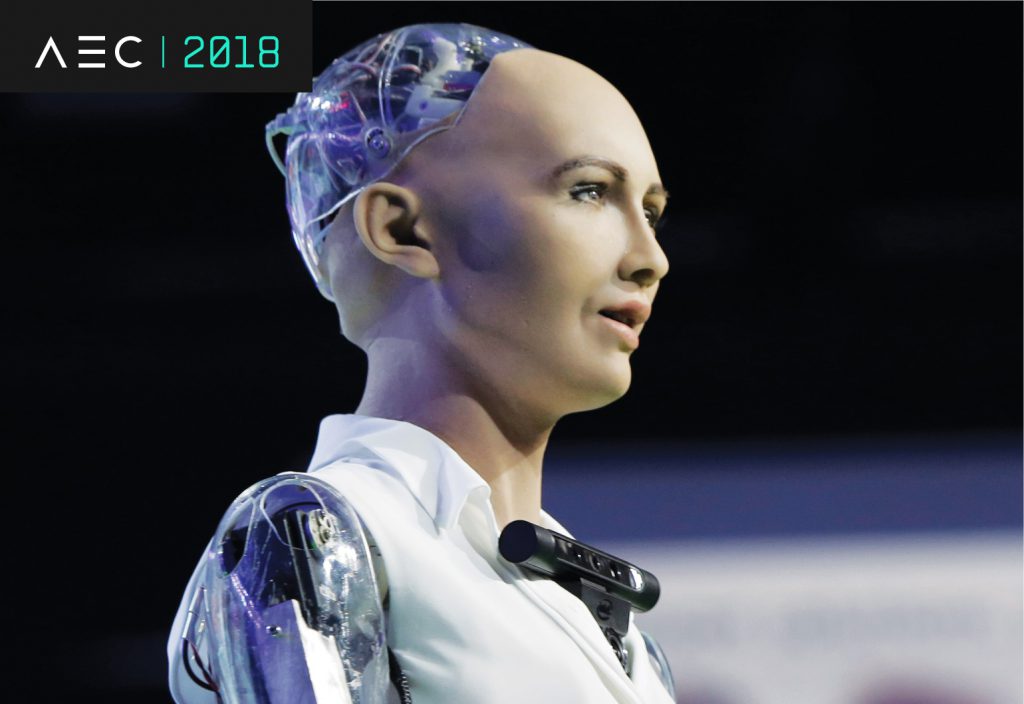Sophia the humanoid robot is sure to turn heads when she makes an appearance in Sydney this September.
How much longer until we get machines with human-level capabilities? Discussions about time-frames and consequences can occasionally get heated, and nobody knows any proper answers, but every now and then an expert will take a punt.
In February Dr David Hanson, founder of Hanson Robotics, told the World Congress on Information Technology in Hyderabad that robots would be “alive and have full consciousness in five years” according to India’s The Economic Times.
Hanson is a PhD in interactive arts and engineering and a former Disney sculptor and researcher at the company’s Imagineering Lab. His Hong Kong-based robotics firm is the maker of lifelike, humanoid robots, most famously ‘Sophia’, who has made appearances on talk shows and conference stages around the world.
Despite progress by Hanson and others, not everybody believes truly convincing humanoid robots will be here in the near-term future.
“Part of the challenge is the ‘uncanny valley’, robots that are even close to humans in appearance and behaviour look eerie,” said UNSW Professor of Artificial Intelligence Toby Walsh.
“But AI has made great advances in the past few years, driven by more computer power, more data and advances in algorithms like deep learning.”
Sophia’s dialogue uses a basic decision tree, like a chatbot, integrated with other AI features for tasks such as governing expression and emotion recognition. Last year, Hanson’s Chief Scientist, Ben Goetzel, told Humanity+ magazine that Apple’s Siri would probably be the nearest match to the company’s dialogue system, which also “seems to be a sort of complex decision graph, which on the back end can draw on a variety of different sources”.
He acknowledged it is not artificial general intelligence (AGI) but told The Verge, it is “absolutely cutting-edge in terms of dynamic integration of perception, action, and dialogue”.
Sophia is arguably an impressive feat of several different engineering disciplines, right down to her patented ‘Frubber’ emulating human skin, and described as a “spongy elastomer using lipid-bilayer nanotech, self-assembled into humanlike cellwalls”.
For whatever her advancements or shortcomings, Sophia and other androids made by Hanson Robotics are helping drive a necessary conversation about what should and shouldn’t be built, and why or why not. The ethics around recognising human qualities in robots were front and centre after Saudi Arabia, as a publicity stunt, granted citizenship to Sophia last October.
Sophia will be appearing at this year’s Australian Engineering Conference to discuss robot rights. Learn more about the Australian Engineering Conference here.


